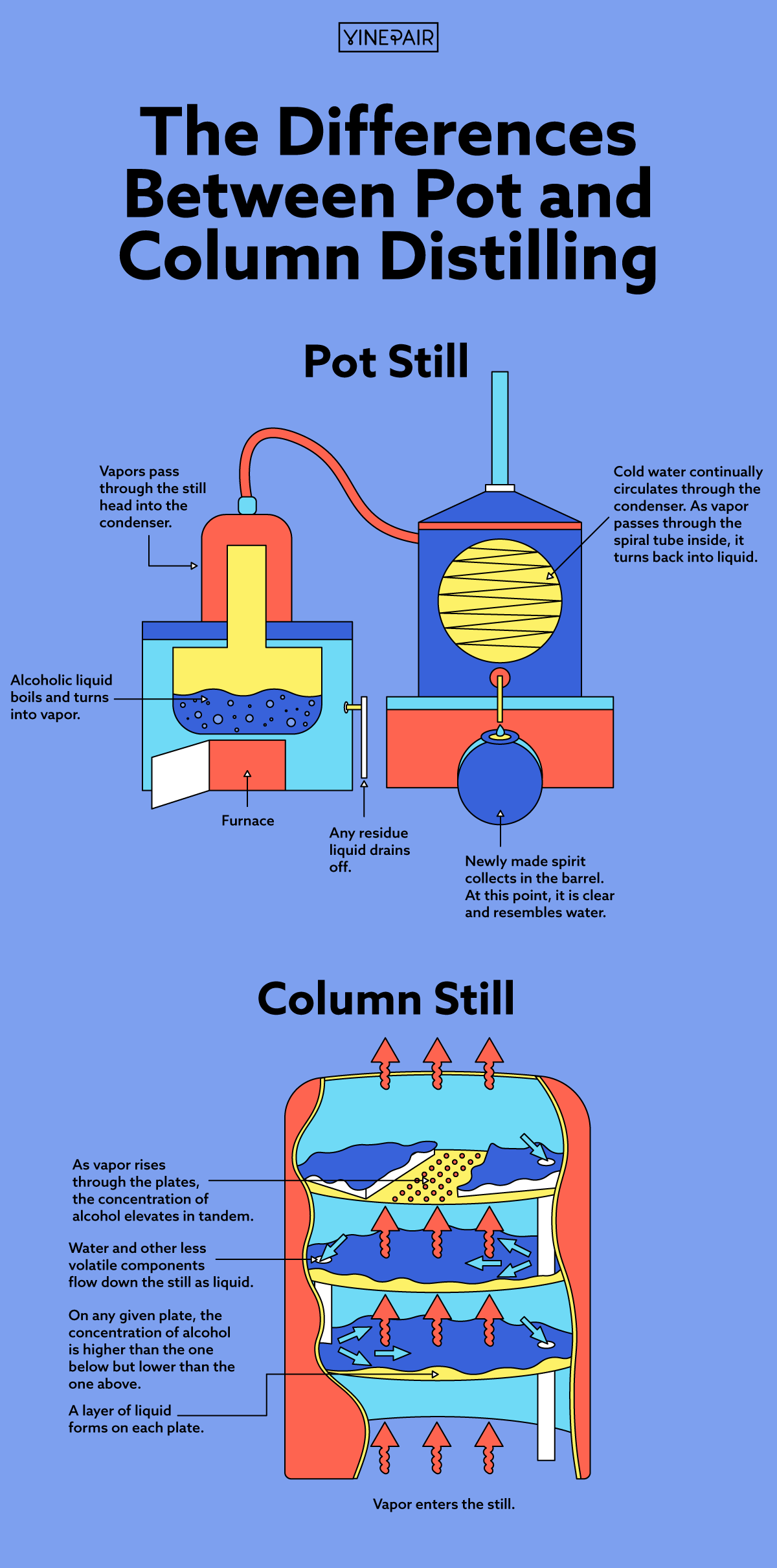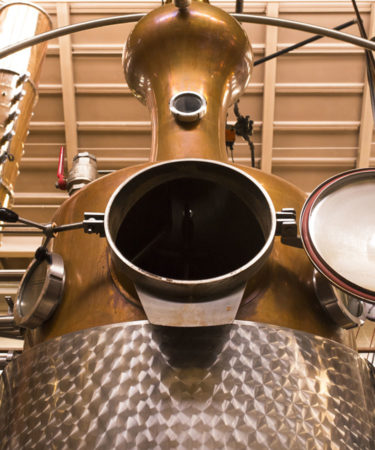Distillation can be complex, but its principles are easy enough to grasp. The aim of all distillation is to “increase the alcohol content of the liquid,” according to the Wine & Spirits Education Trust‘s (WSET) Level II textbook.
To do so, you need a still, most of which fall into one of two categories: pot or column. Pot stills, the oldest style, are believed to create more flavorful spirits because the process reuses small, highly concentrated quantities of alcoholic liquid (called “heads” and “tails”). Column stills, also known as Coffey or continuous stills, run continuously, making them more cost-efficient.
A good comparison might be cast-iron versus stainless-steel pans. One isn’t better than the other, necessarily: It depends on what you want to get out of it.
VinePair created this visualization using descriptions and definitions from WSET. Learn the fundamentals of both styles here!

